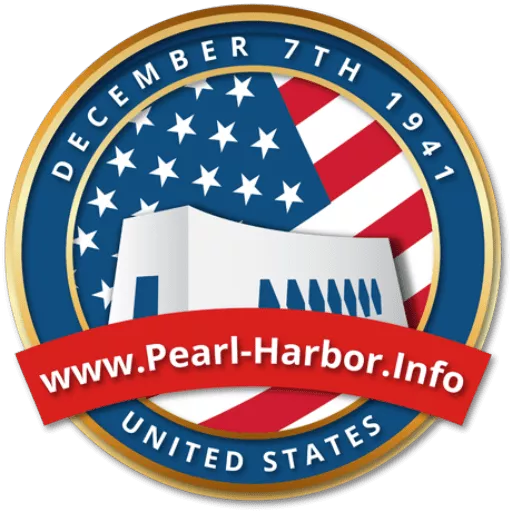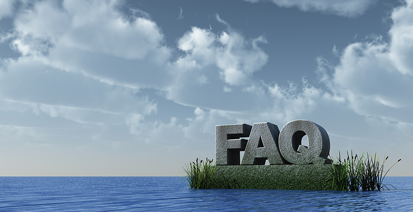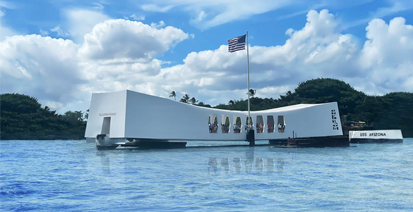FORD ISLAND CASUALTIES
Patrol Squadron 21
Pearl Harbor Attack
Ford Island Naval Air Station was located on Ford Island in Pearl Harbor. The Island was originally under the control of the U.S. Army, which had an airfield constructed on the Island and was attacked during the 1941 Japanese surprised attack on Pearl Harbor. This airfield was called Luke Field. After the U.S. Navy established itself in Pearl Harbor, they constructed facilities for float planes on Ford Island, this is just about 1.5 miles from where Pearl Harbor National Memorial is located today. At this time, there was intense competition between the Army and the Navy for control of the facilities on the Island. Advances in aviation technology meant that Luke Field was no longer able to accommodate the newer, larger aircraft, and the Army began planning a newer, larger airfield. The Army left Ford Island after the construction of the new larger Hickam Air Field. The name Luke Field was given to a different airfield on the U.S. Mainland. The airfield was renamed Naval Air Station Ford Island. During the Japanese attack on Pearl Harbor, Naval Air Station Ford Island came under attack. Her aviation facilities were damaged, and the buildings were strafed by Japanese aircraft. The base was also hit by bombs meant for the battleships of Battleship Row. The airfield is not far from where the Battleship Arizona sank. After the attack, aircraft from the USS Enterprise attempted to land at Ford Island and were shot down by jumpy anti-aircraft gunners. Even during the war, it became obvious that Naval Air Station Ford Island was too small to accommodate aircraft in increasing size and numbers. Operations were shifted to Naval Air Station Barbers Point and Naval Air Station Kaneohe Bay.
The airfield was re-designated as an Auxiliary Landing Field and served as a training field for civil aircraft and military helicopters. Air operations ceased in 1999, and the facilities fell into disuse. An attempt at a renewal occurred after the construction of the Ford Island bridge. Two hangars and the former air control tower eventually became the Pearl Harbor Aviation Museum which is one of the Pearl Harbor Historic Sites, not far from the USS Missouri battleship and the USS Arizona Memorial.
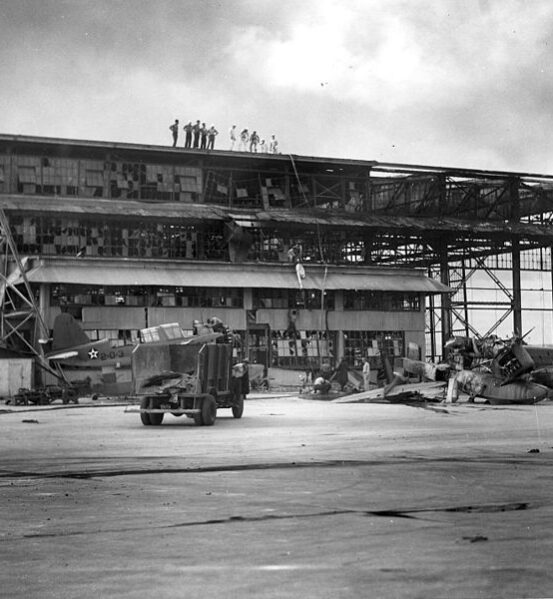
U.S. Navy personnel inspect a damaged hangar at Naval Air Station Ford Island in the aftermath of the Japanese attack on Pearl Harbor, Hawaii (USA), December 1941. A destroyed Vought OS2U Kingfisher is visible on the right, another OS2U of Observation Squadron VO-2 is worked on., U.S. Navy, U.S. Navy National Museum of Naval Aviation photo No. 1996.488.029.080, PD-USGov
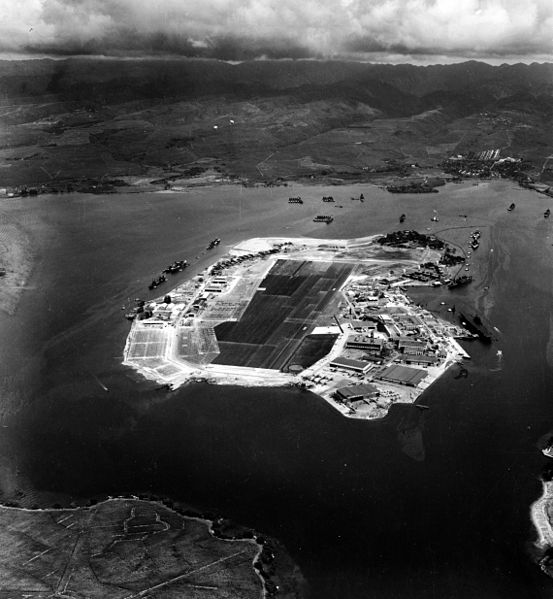
Aerial photograph of Ford Island, looking about NNE, taken 10 October 1941. The Naval Air Station occupies most of the Island, with the seaplane base on the point at the near right. There are about twenty PBY patrol planes parked there. USS Enterprise (CV-6), USS Curtiss (AV-4) and two battleships are tied up along Ford Island's southeastern side, to the right. Aiea is on the far shore in the upper right., Official U.S. Navy Photograph, now in the collections of the National Archives., Official U.S. Navy photo 80-G-279375 from the U.S. Navy Naval History and Heritage Command, PD-USGov.
